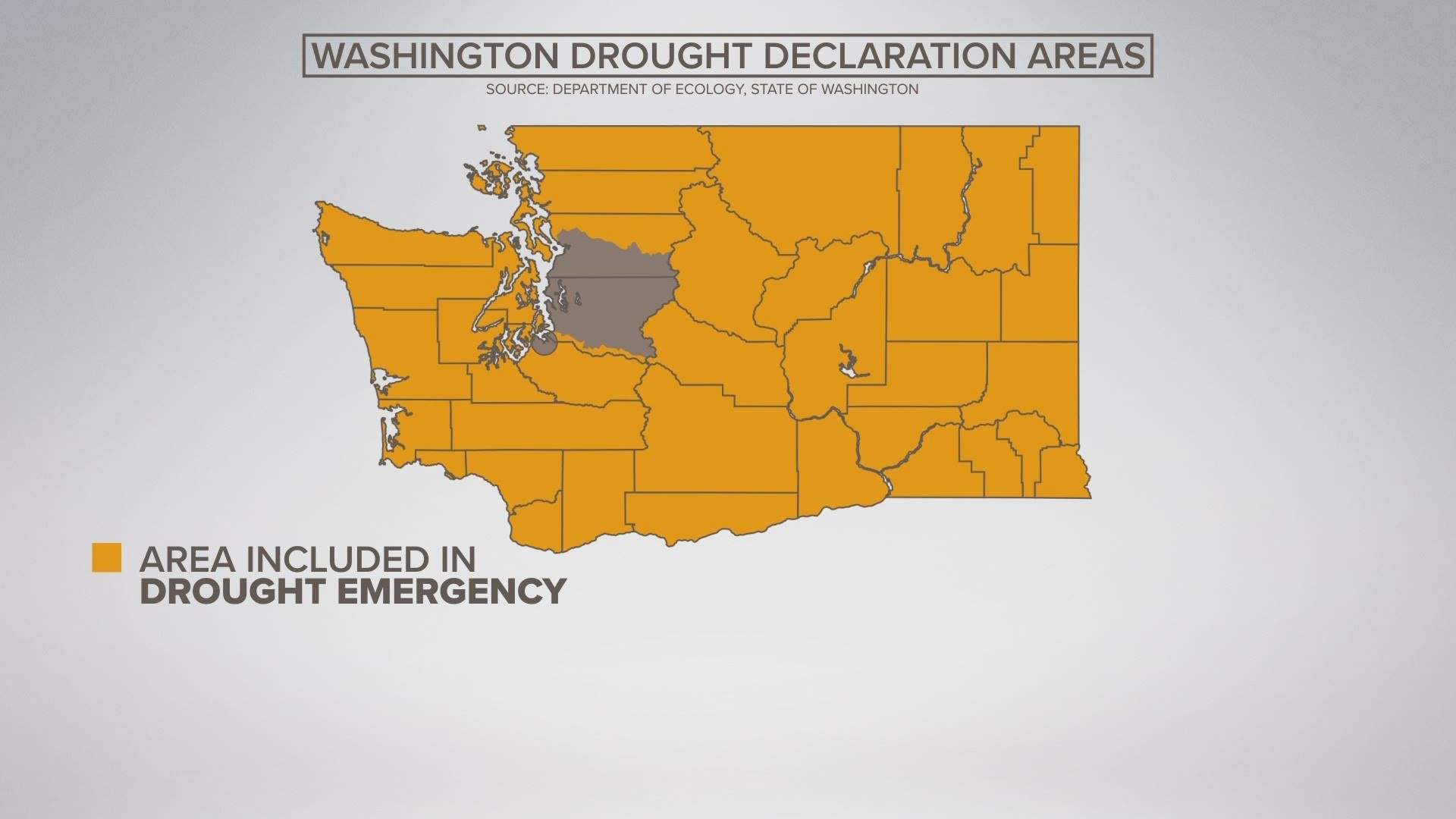Washington Gov. Jay Inslee declared a drought emergency across the entire state this week, except for parts of three counties: King, Snohomish and Pierce. Those counties didn’t get any more rain than the others, so why isn’t the entire state in a drought?
The reason comes down to water storage. Specifically, it’s the ability of those counties to capture and store enough of the runoff from the near-record snowpack last winter to maintain their water supply above 75% of normal. That means in Seattle, Everett and Tacoma, it’s pretty much business as usual.
“It’s the hydrologic bar – it’s 75% of the water supply available to a geographic area,” said Jeff Marti, the drought coordinator for the Washington State Department of Ecology, who said it’s more than just a percentage measurement; it’s more than just the dirt being dry. “What does it mean in terms of hardships? What is it doing to hurt drinking water supplies, environmental values, agriculture? And we make conclusion about hardships, and that is the drought declaration.”
Marti consults with a panel of experts in providing the scientific conclusions that the state is or is not in a drought. That team includes state climatologist Nick Bond and federal snowpack expert Scott Pattee with the U.S. Department of Agriculture’s Natural Resource Conservation Service.
Marti checks numerous data sources from the National Weather Service, the University of Washington, the U.S. Geological Survey’s stream gauges and others. He is most disturbed by the UW’s model of soil moisture that shows very dry soil through much of the state, where only patches of soil up in the North Cascades even reach normal.


“You see those deep, dark reds and that’s really troubling, because those percentile levels are down in the zero to five percentile, which is an indication that there are record low conditions throughout much of the state,” said Marti. “That’s really bad news if you don’t have irrigation to compensate. If you’re a dryland farmer, soil is your method for storing water.”

